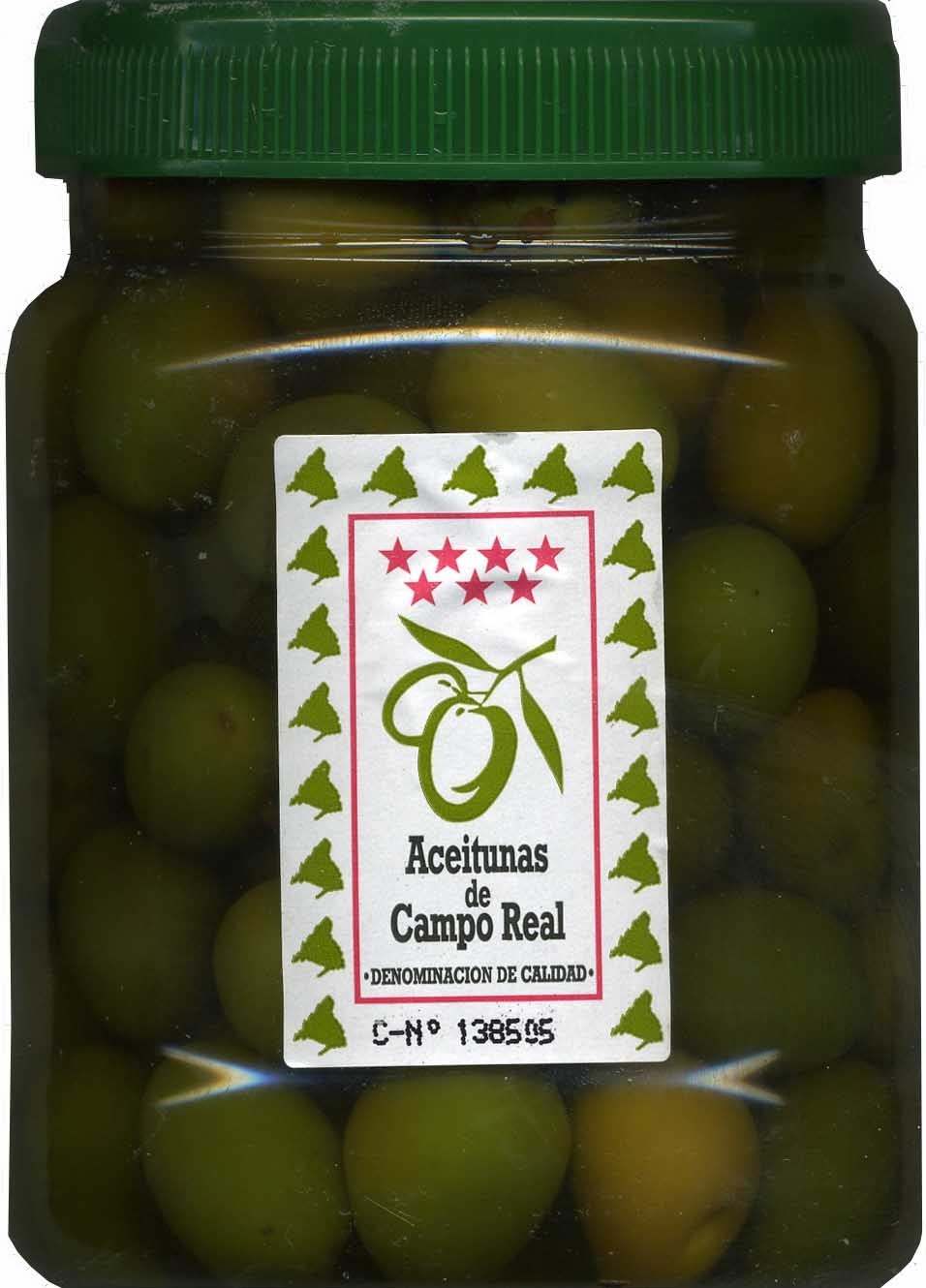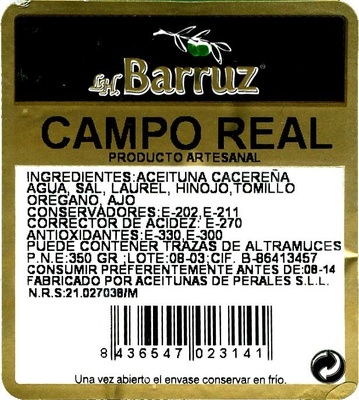Aceitunas de Campo Real - Barruz - 350 g (escurrido)
This product page is not complete. You can help to complete it by editing it and adding more data from the photos we have, or by taking more photos using the app for Android or iPhone/iPad. Thank you!
×
Código de barras: 8436547023141 (EAN / EAN-13)
Common name: Aceitunas verdes enteras de la variedad Cacereña
Cantidade: 350 g (escurrido)
Empaquetado: es:Bote de plástico
Marcas: Barruz
Categorías: en:Plant-based foods and beverages, en:Plant-based foods, en:Pickles, en:Olive tree products, en:Plant-based pickles, en:Olives, en:Green olives, en:Whole olives, en:Whole green olives
Etiquetas, certificacións, premios: en:Vegetarian
Orixe dos ingredientes: España, es:Madrid (comunidad autónoma)
Lugares de fabricación ou procesamento: Villanueva de perales, Madrid (comunidad autónoma), España
Traceability code: FABRICANTE Y ENVASADOR:, ES 21.027038/M C CE, ACEITUNAS DE PERALES S.L.L.
Link to the product page on the official site of the producer: http://www.aceitunasdeperales.es/index.p...
Tendas: Carrefour
Country: España






